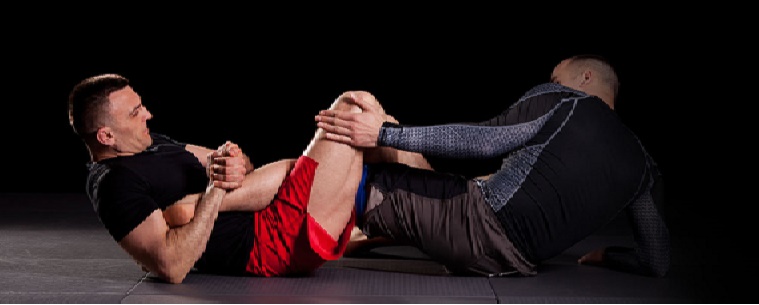“When you get good at something as difficult as Jiu Jitsu, it makes everything in your life better.” – Joe Rogan
Then why involve yourself with something so difficult? What is so incredible about Brazilian Jiu Jitsu?
Consider it a martial art or practice it as a combat sport; the fundamental motto of Jiu Jitsu is to make even the weak one strong enough to uphold self against a bully and face unfortunate moments. Emphasizing on hand-to- hand ground fighting, it teaches you to defend yourself even if you are without any weapon. Grappling will strengthen you against an assailant with techniques to escape, better your comparative position and cause injury if required.

Brazilian Jiu Jitsu is adaptation of ground fighting Kodokan Judo by Carlos and Helio Gracie. In this contact sport you will get familiarized with fighting which takes place on the ground and the techniques of defeating the other with joint-locks and chokeholds.
Joint-locks and Choke-holds
As the names suggests, in joint-locks force is exerted upon the joints of the opponent to cause pain by moving them from the normal limit of motion. The extent of pain induced varies depending on the type of force applied, which may result in muscle and bone injuries. Whereas in choke-holds, you either choke or strangle the neck of your opponent to prevent the flow of air and blood respectively. Depending on your technique, the attack can be of both type which may cause blackout and even death. But to apply the practiced forms of joint-locks and choke-holds faultlessly, it is important that you gain a profiting position against your combatant first.
Two Commonly Used Positions in Jiu Jitsu:
- Mount: Mounted or on top of your opponent, you have the advantage of striking, choking and applying joint-locks. In case the other tries to escape or counter with submission holds you need to change your relative position. Sitting on top with your weight settled down on the chest or stomach of the opponent, you can lay yourself down on the combatant and keep your hands flat on the ground. The placing of your hands is crucial because it will benefit you with a good base and make it tough for the opponent to roll out. Keeping one hand intact on the ground, you can also introduce a slight variation by holding the neck of the one down under with you’re the other arm.
- Guard: Unlike mount, here the other combatant is on top of you. Guard is all about letting you escape from such compromising situation. Laid on your back there are not many approaches you can use to protect yourself from the blows of your opponent. But still you are empowered to wrap your legs around the chest of the other and crush it hard, to cause difficulty in breathing. You can utilize joint-locks and choke-holds in guard as well. Once you attain some control, keep your head on the ground to relieve some of your exhaustion.
In other positions you will find yourself at the side, back and sitting next to the other fighter. Each position has its own convenience. While in one you use your knee to avert the opponent from sliding, in another you may make use of Gi to stifle; in this way your opponent, will not be able to pull out his/her neck.
